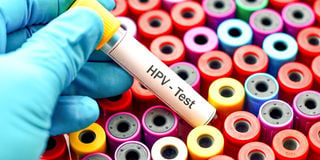Premium
Cervical cancer: Just how much do you know?

An advantage of HPV testing is that sample collection can be done by the client themselves.
What you need to know:
- Many women are unaware of the importance of cervical screening.
- Screening plays a vital role in prevention as it allows for early detection and treatment in the asymptomatic precancerous stage.
Nine women die from cervical cancer in Kenya every day, accounting for 10 per cent of cancer deaths in women, a figure higher than that of deaths by breast cancer.
Many women are unaware of the importance of cervical screening. Screening plays a vital role in prevention as it allows for early detection and treatment in the asymptomatic precancerous stage. According to the Kenya STEPwise survey for NCDs Risk Factors 2015 report, only 16.4 per cent of women aged 30 – 49 years had ever been screened. The statistics are gravely worrisome.
The Kenya National Cancer Screening Guidelines (2018) recommend the HPV test, visual inspection (VIA) and Pap smear as screening methods. For women over 30, the HPV test is the primary screening method.
Both VIA and Pap smear involve genital examination. Women skip the tests altogether as they find genital examinations uncomfortable, embarrassing, scary, intrusive and wrongly believe the tests are painful. This attitude has contributed to the low number of women getting screened.
On the other hand, an advantage of HPV testing is that sample collection can be done by the client themselves. The client collects samples with the help of a device called an Evalyn brush, with which they swab the inner parts of the vagina. The sample is then taken to a lab for testing. Sample self-collection is convenient and privacy to women.
Bottom line is that cervical cancer is one of the most preventable and treatable forms of cancer. However, this is pegged on vaccination, early detection through screening, and effective management.


